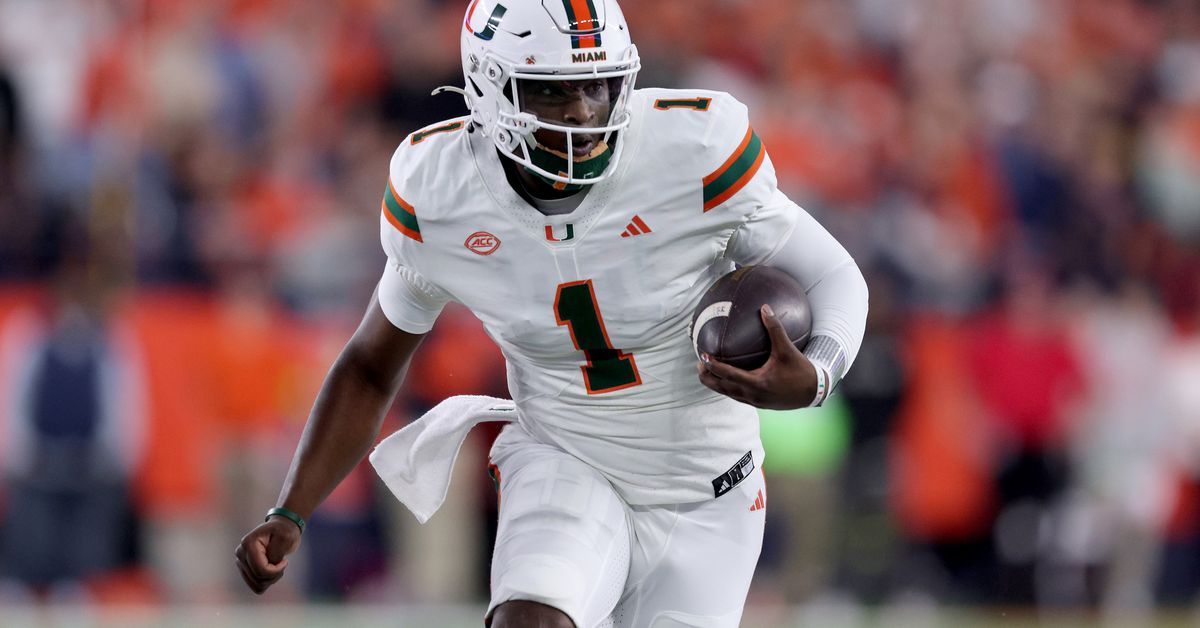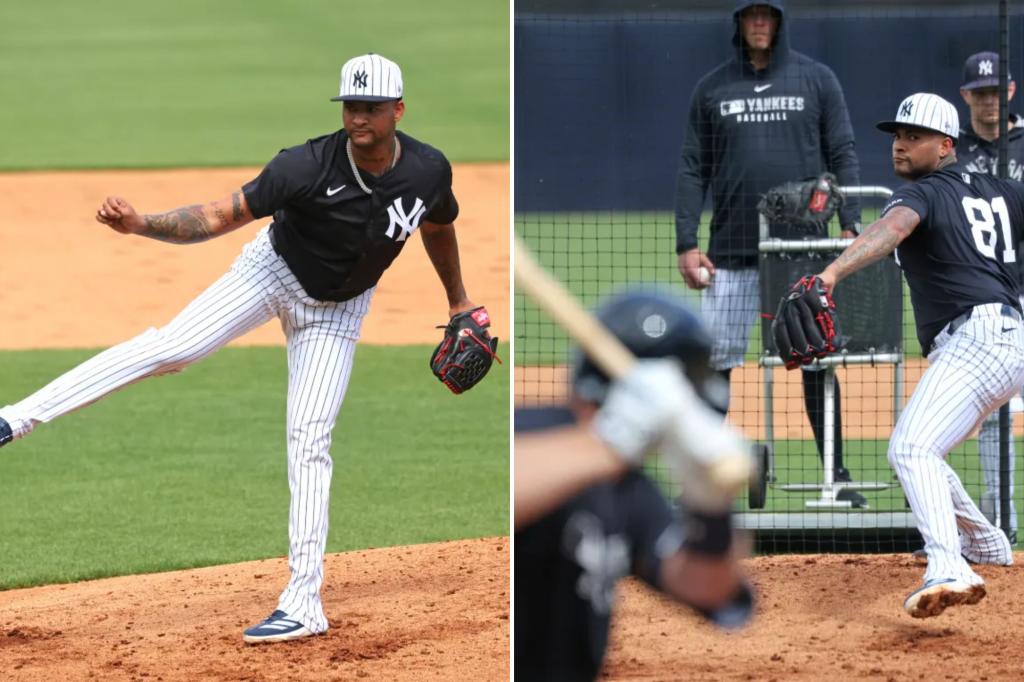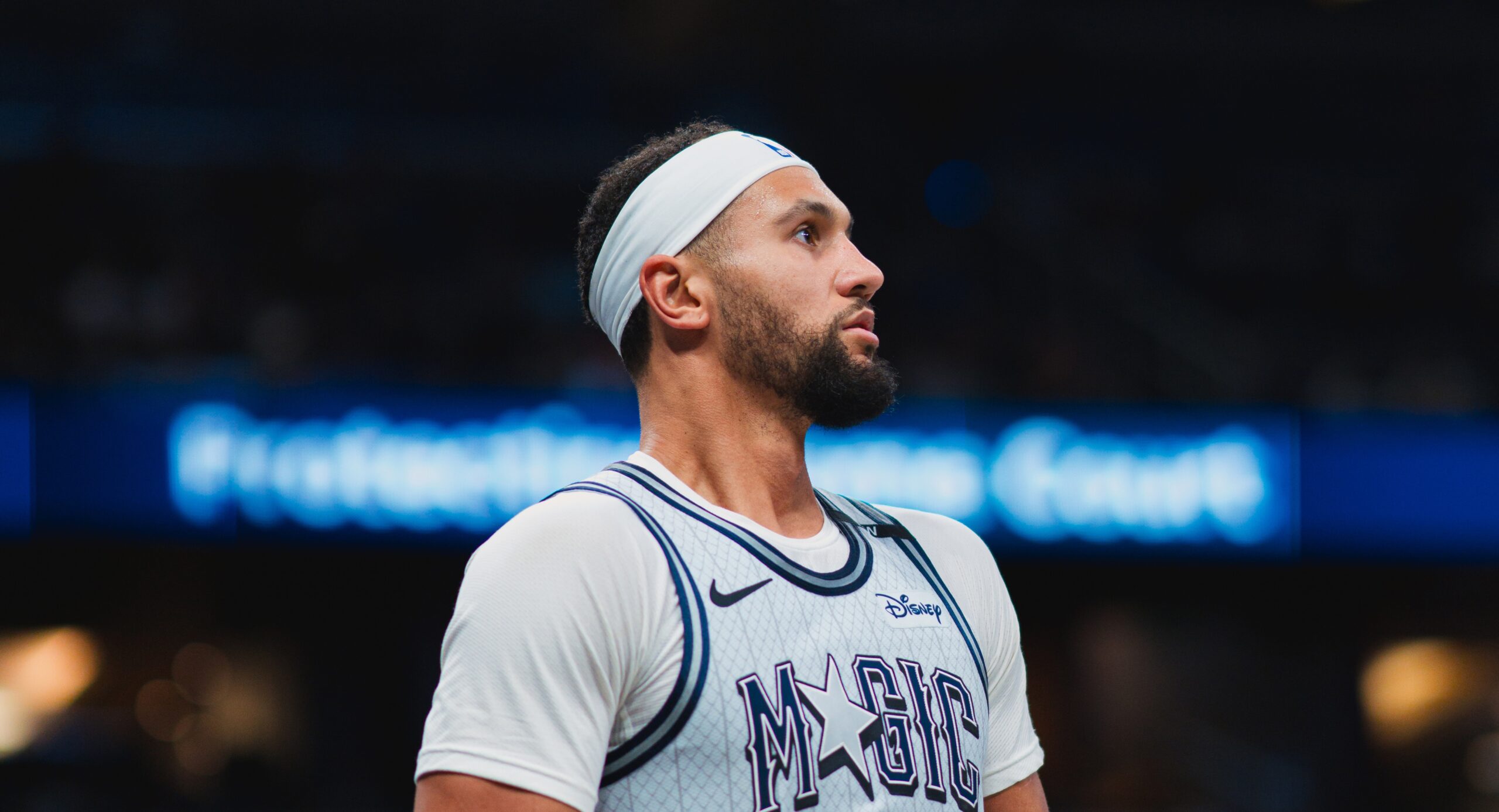
It’s that time again at Big Blue View for my annual tradition of sharing weekly multi-round mock drafts tailored for the New York Giants.
I know many of you will jump directly to the draft selections, but allow me to emphasize that the main goal of these mock drafts isn’t necessarily to predict outcomes accurately. Instead, it’s to explore various scenarios, spark discussions, and enhance our understanding of different players.
With that in mind, I may occasionally present hypothetical situations that I believe are unlikely to occur. Now, without further ado, let’s dive into this four-round mock draft.
For this exercise, I’m using the NFL Mock Draft Database simulator to make the selections.
Round 1 (No. 3) — Cam Ward, QB, Miami
In this scenario, the Tennessee Titans choose Colorado quarterback Shedeur Sanders first overall. Consequently, the Cleveland Browns opt not to pick a quarterback at No. 2, leaving Ward available for the Giants.
Before we assess the effects of free agency, it’s evident that this scenario would greatly benefit the Giants.
Ward is widely regarded as the top quarterback prospect in the 2025 draft class. According to Dane Brugler from The Athletic, Ward holds that distinction.
Brugler notes, “It became increasingly apparent early in the 2024 season that if an NFL team were to invest in a quarterback from this draft class, Ward would be the leading candidate.”
The Giants must emerge from this offseason with a high-caliber option at quarterback, and this scenario provides that opportunity without needing to make any moves up the draft board.
With Ward on the board, no other players were considered for this selection.
Round 2 (No. 34) — Walter Nolen, DT, Mississippi
Following the quarterback selection, it’s essential for the Giants to refocus on strengthening their trenches in the draft. It’s crucial to make beneficial selections. I fully plan to highlight trench players in each mock draft leading up to the real draft.
If general manager Joe Schoen aims to keep his job—and Brian Daboll’s—it’s advisable to reverse course and emphasize building from within.
I am uncertain whether Nolen will still be available by this point in the actual draft, but should he be, letting him pass would be a mistake.
Brugler describes him as follows:
“With his impressive length and ability to surge off the ball, Nolen generates immediate power and can disrupt plays due to his quick penetration through gaps.”
The 33rd Team projects Nolen as an impactful starter in the NFL by the conclusion of his rookie contract.
The Giants need support for Dexter Lawrence. Up to this point, Schoen has not spent a premium draft pick on a defensive tackle. It’s time to change that approach.
Other players considered:
A variety of players were available for consideration, including:
Josh Conerly, OT, Oregon; Benjamin Morrison, CB, Notre Dame; Shavon Revel Jr., CB, East Carolina; Nick Emmanwori, S, South Carolina; Derrick Harmon, DT, Oregon; Donovan Jackson, G, Ohio State; Grey Zabel, IOL, North Dakota State; Azareye’h Thomas, CB, Florida State; Jonah Savaiinaea, IOL, Arizona.
Round 3 (No. 65) — Xavier Watts, S, Notre Dame
Given the direction of the draft, I considered doubling down on defensive linemen with Deone Walker out of Kentucky or T.J. Sanders from South Carolina. Instead, I opted for a more collaborative approach, selecting safety Tyler Nubin to provide necessary support alongside the new defensive backs coach, Marquand Manuel.
Here’s a scouting summary on Watts from The 33rd Team:
“Xavier Watts, a safety for the Notre Dame Fighting Irish, is a playmaking defender noted for his exceptional ball skills. His experience as a wide receiver has significantly enhanced his ability to read route combinations and anticipate the decisions of opposing quarterbacks.”
“He is explosive, a strong tackler, and demonstrates a commendable approach to run defense alongside his coverage responsibilities. His transition to safety after playing receiver sets him up for potential early success, making him a likely candidate for a cornerstone role on an NFL roster.”
Brugler mentions that “while his size-speed attributes may be averaged, Watts tends to be precisely where he needs to be during crucial moments.”
When I think of Watts, I recall my admiration for safeties Kyle Hamilton and Brian Branch leading up to their respective drafts. Neither boasted elite athleticism, yet both have thrived at the professional level.
Other players considered:
Deone Walker, DT, Kentucky; T.J. Sanders, DT, South Carolina; Elijah Arroyo, TE, Miami (FL); Darien Porter, CB, Iowa State; Tate Ratledge, G, Georgia.
Round 4 (No. 104) — Jordan Phillips, DT, Maryland
With the draft board falling this way, no interior offensive linemen, cornerbacks, or even exciting wide receivers were available for me.
Selecting Jordan Phillips, who stands 6-foot-3 and weighs 318 pounds, means reinforcing the defensive tackle position while also addressing a significant need.
The Giants have a history of targeting players from All-Star games, particularly those they have closely observed. Phillips was a standout performer at the 2025 East-West Shrine Bowl, where Giants defensive coordinator Shane Bowen served as head coach, allowing the team to assess Phillips extensively.
Brugler ranks Phillips at No. 73 on his Big Board:
“Offering a blend of youth, explosiveness, and strength makes Phillips an intriguing prospect. However, he sometimes undermines these traits by being slow off the line and losing leverage. Nonetheless, NFL teams are likely to take a chance on his natural talent.”
The 33rd Team provides a compelling overview:
Jordan Phillips from Maryland is projected as an athletic nose tackle in the NFL. This young talent demonstrated solid point-of-attack skill as a redshirt sophomore, showcasing lateral agility and the ability to anchor properly to support linebackers.
Phillips possesses significant athletic potential, making him a candidate for a more diverse role in passing situations as well. He combines a quick first step with powerful hands to pressure opposing quarterbacks effectively. With his low and compact build, he enjoys natural leverage against double teams and shows excellent technique in neutralizing combination blocks.
Other players considered:
Jaylin Noel, WR, Iowa State; Savion Williams, WR, TCU; Tez Johnson, WR, Oregon; Dorian Strong, CB, Virginia Tech.
Round 4 (No. 134) — Quincy Riley, CB, Louisville
The draft board presented an unusual situation. I had hoped to discover offensive line value here, but ultimately decided that I couldn’t pass up an opportunity for a potentially impactful cornerback.
My choice came down to Riley or Virginia Tech’s Dorian Strong. I favored Riley for several reasons, including his compatibility with Bowen’s defensive scheme. Additionally, Riley was a standout performer for the National Team at the Senior Bowl, where Mike Kafka served as coach.
According to The Draft Network:
“Quincy Riley is an instinctive and physical cornerback, best positioned within tight coverage or playing downhill in zone defense, where his ball skills and awareness shine through. With desirable size and length for a modern cornerback, he can effectively match up against larger receivers while also being agile enough to stick with faster pass catchers. His skill set presents considerable upside due to the combination of his ball skills, foundational coverage ability, and positional versatility.”
While it’s disappointing to leave the first four rounds without addressing the offensive line, if I were to extend this mock to seven rounds, I would ensure to secure at least one or two developmental offensive linemen.










